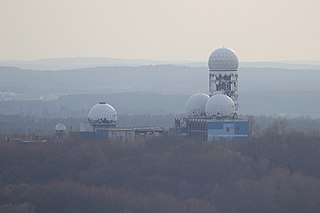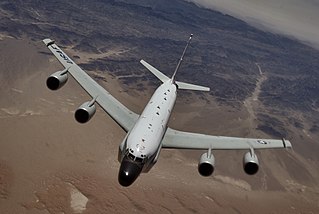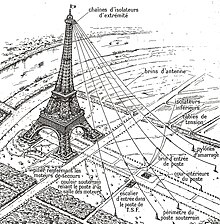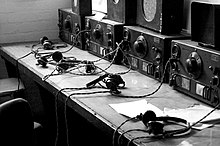
ECHELON, originally a secret government code name, is a surveillance program operated by the five signatory states to the UKUSA Security Agreement: Australia, Canada, New Zealand, the United Kingdom and the United States, also known as the Five Eyes.

The National Security Agency (NSA) is an intelligence agency of the United States Department of Defense, under the authority of the Director of National Intelligence (DNI). The NSA is responsible for global monitoring, collection, and processing of information and data for foreign and domestic intelligence and counterintelligence purposes, specializing in a discipline known as signals intelligence (SIGINT). The NSA is also tasked with the protection of U.S. communications networks and information systems. The NSA relies on a variety of measures to accomplish its mission, the majority of which are clandestine. The NSA has roughly 32,000 employees.

Signals intelligence (SIGINT) is the act and field of intelligence-gathering by interception of signals, whether communications between people or from electronic signals not directly used in communication. Signals intelligence is a subset of intelligence collection management. As classified and sensitive information is usually encrypted, signals intelligence may necessarily involve cryptanalysis. Traffic analysis—the study of who is signaling to whom and in what quantity—is also used to integrate information, and it may complement cryptanalysis.

Royal Air Force Menwith Hill is a Royal Air Force station near Harrogate, North Yorkshire, England, which provides communications and intelligence support services to the United Kingdom and the United States. The site contains an extensive satellite ground station and is a communications intercept and missile warning site. It has been described as the largest electronic monitoring station in the world.

Teufelsberg is a non-natural hill in Berlin, Germany, in the Grunewald locality of former West Berlin. It rises about 80 metres (260 ft) above the surrounding Teltow plateau and 120.1 metres (394 ft) above the sea level, in the north of Berlin's Grunewald Forest. It was named after the Teufelssee in its southerly vicinity. The hill is made of debris and rubble, and covers an unfinished Nazi military-technical college. During the Cold War, there was a U.S. listening station on the hill, Field Station Berlin. The site of the former field station is now fenced off and is currently being managed by an organisation which charges 10 euros for public access.

The United Kingdom – United States of America Agreement is a multilateral agreement for cooperation in signals intelligence between Australia, Canada, New Zealand, the United Kingdom, and the United States. The alliance of intelligence operations is also known as the Five Eyes. In classification markings this is abbreviated as FVEY, with the individual countries being abbreviated as AUS, CAN, NZL, GBR, and USA, respectively.

Bad Aibling is a spa town and former district seat in Bavaria on the river Mangfall, located some 56 km (35 mi) southeast of Munich. It features a luxury health resort with a peat pulp bath and mineral spa.

GCHQ Bude, also known as GCHQ Composite Signals Organisation Station Morwenstow, abbreviated to GCHQ CSO Morwenstow, is a UK Government satellite ground station and eavesdropping centre located on the north Cornwall coast at Cleave Camp, between the small villages of Morwenstow and Coombe. It is operated by the British signals intelligence service, officially known as the Government Communications Headquarters, commonly abbreviated GCHQ. It is located on part of the site of the former World War II airfield, RAF Cleave.

The United States Army Security Agency (ASA) was the United States Army's signals intelligence branch from 1945 to 1976. The Latin motto of the Army Security Agency was Semper Vigilis, which echoes the declaration, often mistakenly attributed to Thomas Jefferson, that "The price of liberty is eternal vigilance."
With the rise of easily-intercepted wireless telegraphy, codes and ciphers were used extensively in World War I. The decoding by British Naval intelligence of the Zimmermann telegram helped bring the United States into the war.
James W. Hall III is a former United States Army warrant officer and signals intelligence analyst in Germany who sold eavesdropping and code secrets to East Germany and the Soviet Union from 1983 to 1988.
Signals intelligence by alliances, nations and industries comprises signals intelligence (SIGINT) gathering activities by national and non-national entities; these entities are commonly responsible for communications security (COMSEC) as well.

Signals intelligence operational platforms are employed by nations to collect signals intelligence, which is intelligence-gathering by interception of signals, whether between people or between machines, or mixtures of the two. As sensitive information is often encrypted, signals intelligence often involves the use of cryptanalysis. However, traffic analysis—the study of who is signalling whom and in what quantity—can often produce valuable information, even when the messages themselves cannot be decrypted.
Before the development of radar and other electronics techniques, signals intelligence (SIGINT) and communications intelligence (COMINT) were essentially synonymous. Sir Francis Walsingham ran a postal interception bureau with some cryptanalytic capability during the reign of Elizabeth I, but the technology was only slightly less advanced than men with shotguns, during World War I, who jammed pigeon post communications and intercepted the messages carried.

The Bad Aibling Station (BAS), also known as the 18th United States Army Security Agency Field Station, Field station 81, and Hortensie III is a satellite tracking station operated by the German SIGINT agency BND from nearby Mangfall Barracks in Bad Aibling, Bavaria.
Rohde & Schwarz GmbH & Co KG is an international electronics group specializing in the fields of electronic test equipment, broadcast & media, cybersecurity, radiomonitoring and radiolocation, and radiocommunication. The company provides also products for the wireless communications, electronics industry, aerospace and defense, homeland security and critical infrastructures.

Mass surveillance in East Germany was a widespread practice throughout the country's history, involving Soviet, East German, and Western agencies.
Hüseyin Yıldırım is a Turkish-American auto mechanic who was sentenced to life imprisonment in the United States for his courier role in the espionage activities of U.S. serviceman James Hall III during the Cold War era. Yıldırım was later pardoned and extradited to his homeland, where he was sentenced to 17 years in prison but served only one day.
Ferdinand Voegele was a German philologist and linguistic cryptanalyst, before and during the time of World War II and who would eventually lead the cipher bureau of the Luftwaffe Signal Intelligence Service.

Operation Rubicon, until the late 1980s called Operation Thesaurus, was a secret operation by the West German Federal Intelligence Service (BND) and the U.S. Central Intelligence Agency (CIA), lasting from 1970 to 1993 and 2018, respectively, to gather communication intelligence of encrypted government communications of other countries. This was accomplished through the sale of manipulated encryption technology (CX-52) from Swiss-based Crypto AG, which was secretly owned and influenced by the two services from 1970 onwards. In a comprehensive CIA historical account of the operation leaked in early 2020, it was referred to as the "intelligence coup of the century" in a Washington Post article.

















